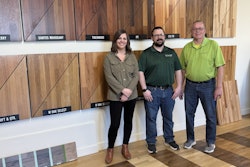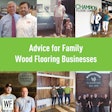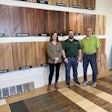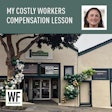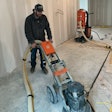
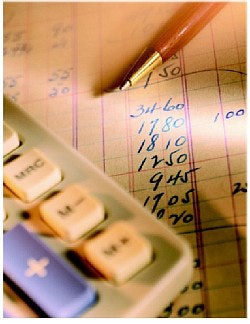
I run into many business owners who have a very limited understanding of the income statement. They look at the bottom line and try to relate this to cash. The income statement, however, has nothing to do with cash: It is the statement that tells you whether you are making a profit. The income statement, also known as the profit-and-loss statement, does more than simply tell you your bottom line. It can reveal how well you are managing your operations. To understand how this works, you must first understand what makes up a typical income statement. An example for a hardwood flooring installer is shown on page 66.
Revenue Reality
An income statement always starts with the money coming in, i.e. sales or revenue. Revenue is defined as "money earned." This means that until you earn it, it cannot be revenue. When a customer gives you a deposit for a flooring job, you have not yet earned that deposit; therefore, it is not revenue. When you complete a job and bill the customer, you have earned the money and so it can be recorded as revenue, regardless of whether the customer paid yet or not.
Some companies use progress billing. When progress billing is used, you record the revenue as each billable piece of the job is completed. If the job is 50 percent complete, then 50 percent of the price of the job is recorded as revenue because you have earned that amount of money from the job.
Remember, revenue is recorded when it has been earned, regardless of when the actual payment is received. This way, you can more accurately know whether you are actually making any money doing business.
The Goods
The next information listed on an income statement is the cost of goods sold. Cost of goods sold can be defined as those costs that go directly into what it is you do for a living. In the case of a hardwood flooring installer, this means the cost of goods that go directly into installing the hardwood floors. These costs are generally divided into three categories—direct materials, direct labor and indirect costs (overhead).
Direct materials are any materials that go directly into the product the customer is buying—the wood floor. These include such items as wood, adhesive and finish. Direct labor includes the wages for the people who install the hardwood floor. This category generally does not include supervisors or others whose labor only indirectly goes into installing the floor. Finally, there is the category of indirect costs, or overhead. The term overhead is used in more than one way, but for the purposes of your income statement, overhead consists of the indirect costs that go into running your wood flooring contracting business. These are items such as the cost for small tools used to install the floors, the workshop that you use to prepare the wood, depreciation on equipment that you use to install the flooring, supervisors' salaries and utility costs for your shop.
It should be understood that cost of goods sold only become cost of goods sold when you have "used up" or "sold" these items. This means that until you have installed the floor and completed the job, you do not have any items to list under cost of goods sold. When the wood is at your facility, you still own it. As inventory, it is an asset, not the cost of goods sold.
Gross Profit
The next line on an income statement is the gross profit line. Gross profit is simply the difference between sales and cost of goods sold. This number represents the money you make on selling a wood floor before you take operating expenses into account. Each business has a different expectation for cost of goods sold. For the hardwood flooring industry, cost of goods sold is expected to run around 74 percent. You should track your gross profit over time. Gross profit as a percentage of sales should stay stable over time and be within range of the industry standard. When sales go up significantly, you would expect to see a slight drop in the gross profit percentage due to the overhead portion of the income statement. Controlling this number and keeping it in place is one of the most important functions to managing a business well.
Operating Expenses
The next section on an income statement deals with operating expenses.
Operating expenses are defined as money that you need to spend because you are in business, but that does not directly go into installing a wood floor. Operating expenses could be defined in general as "things you use up," such as office salaries, rent, office supplies, business licenses, telephone, travel, entertainment and so on. The items are not recorded as expenses until you use them up. For example, if you have prepaid for liability insurance, you have not used it up until the month it applies to has passed. You would expect to see onetwelfth of your liability insurance cost to show up each month on your income statement because you use up one-twelfth each month.
Additionally, expenses sometimes are recorded as "used up" even before you have paid for them. Consider the same insurance. If you have used up a month of insurance but do not have to pay the bill until mid-year, you still have an expense because you have "used up" the insurance.
Operating Income
Operating income is the next section on your income statement. Taking gross profit and subtracting total operating expenses allows you to calculate operating income. This number tells you how well you are doing at managing your businesses. For the hardwood flooring industry, this number typically runs between 3 and 4 percent.
Operating income commonly is known as EBIT (Earnings Before Interest and Taxes) or EBITDA (Earnings Before Interest, Taxes, Depreciation and Amortization). The reason you don't include taxes in operating income is because what is paid in taxes has nothing to do with how well you manage your business; it only has to do with where your business is located. You don't include interest in operating income because this is a reflection of financing and, again, says nothing about how well you are running your businesses. Suppose for a moment that one owner has to have bank financing to open his business and another owner had family money. One would have interest expense, and one would not. In order to reasonably compare, we need to take the interest out of the equation. This applies to financing interest only. It does not include credit card interest, or other short-term types of interest.
Other Things
The next section on an income statement deals with other income and expenses. These could be looked at as by-products of being in business. Interest income happens because you have extra cash that you put into an account to earn interest. This is a by-product of having extra cash; it has nothing to do with what you do for a living. Gain or loss on the sale of equipment would go in this section of the income statement. When you sell a piece of equipment, you often have a gain or loss. This is a by-product of operations; it is not what you do for a living.
Some income statements include a category for extraordinary items. These are things that happen without an expectation of them happening again.
For example, if you were affected by the hurricanes in Florida and had to pay in excess of what the insurance covered to rebuild, this amount would be an extraordinary item. You would not expect it to happen again.
Applicable Income Tax
The last section on an income statement shows the income taxes that apply to the company. This includes the federal and state income taxes that were due based upon the taxable income of the company.
The Bottom Line
The final number or "bottom line" is the net income or net loss. On a profit-andloss statement it would be called net profit or net loss. This number is simply total revenue less total expenses. For the hardwood flooring industry, this number typically is between 2 and 3 percent.
In Analysis
In analyzing an income statement, you first need to make sure presentation is correct. Once that is done, be sure that you are evaluating at least three periods in time. Then, look at the key indicators—gross profit margins and operating income percentages. Look at everything as a percentage of sales. It is important to look at the movements from period to period. You should expect to see the gross profit percentages to stay stable or to slightly decrease as sales grow. If these percentages are not stable, it means you are having problems with the cost of your installations or you have changed your pricing strategies.
Operating income as a percentage of sales should go up over time as sales go up. If operating income acts like it should, then you can say you are managing your operations well. On the other hand, if these numbers go down over time, you know you are having a problem managing the costs of your operations.
The next step in analyzing an income statement is to scan the percentages for your various operating expenses. Look for any percentages that show a significant variation from the others in the same line item over the years. These variations tell you that you will need to investigate to understand what happened. These variations could be positive or negative, but both are indicators that something different has happened. You also need to look for any percentages that are zero. This usually means something was missed and should be corrected.
As in any accounting analysis, look for relationships. Make sure to compare relationships you find on your income statement with the relationships you find on your balance sheet and your statement of cash flows. These are general guidelines that should be able to help you better understand the income statement and how to use it in your businesses.
XYZ Hardwood Flooring Company Income Statement
DESCRIPTION 1ST YEAR % 2ND YEAR % 3RD YEAR %
Sales $700,000 100.0 $725,000 100.0 $750,000 100.0
Cost of Goods Sold
Direct Materials $224,000 32.0 $232,000 32.0 $240,000 32.0
Direct Labor $189,000 27.0 $194,250 27.0 $202,500 27.0
Overhead $105,000 15.0 $108,750 15.0 $112,500 15.0
TOTAL COST OF GOODS SOLD $518,000 74.0 $535,500 74.0 $555,000 74.0
GROSS PROFIT $182,000 26.0 $188,500 26.0 $195,000 26.0
Operating Expenses
Salaries $110,800 15.8 $113,125 15.6 $118,500 15.8
Postage $3,000 0.4 $3,500 0.5 $3,500 0.5
Bad Debt $4,000 0.6 $4,000 0.6 $3,000 0.5
Utilities $7,000 1.0 $7,000 0.9 $7,600 1.0
Depreciation $4,000 0.6 $4,000 0.6 $4,000 0.5
Insurance $7,000 1.0 $7,000 0.9 $7,500 1.0
Property Taxes $8,000 1.1 $8,500 1.2 $8,000 1.1
Advertising $3,000 0.4 $3,500 0.5 $3,700 0.5
Interest $10,000 1.4 $8,000 1.1 $5,200 0.7
Miscellaneous $4,200 0.6 $4,500 0.6 $5,500 0.7
TOTAL EXPENSES $161,000 23.0 $163,125 22.5 $166,500 22.2
Operating Income $21,000 3.0 $25,375 3.5 $28,500 3.8
Other Income $1,400 0.2 $725 0.1 $3,900 0.5
Income Tax $8,400 1.2 $10.150 1.4 $11,400 1.5
NET INCOME $14,000 2.0 $15,950 2.2 $21,000 2.8
Just a Part of the Picture
There are times when the percentages on an income statement appear to be skewed. This often is due to the recording of expenses before the corresponding revenue has been earned, such as when you have purchased all your materials for a huge job that you haven't started yet. It is suggested that, rather than record things in that manner, contractors should record the expenses as "work in progress" inventory on the balance sheet. This process, which was described in the article on balance sheets featured in the December 2004/January 2005 issue of Hardwood Floors on page 49, would show up as a current asset.
When the revenue is earned and is then able to be recorded on the income statement, the corresponding expenses should also be moved from "work in progress" to "cost of goods sold". This method will always keep the percentages on the income statement accurate.
If the percentages still appear skewed when following the procedure outlined here, that indicates a problem in management of the costs, and appropriate business decisions would need to be made.
Keep in mind that the numbers on the income statement only paint a part of the scene. They have to be looked at within the scheme of the big picture (including the balance sheet) and what is happening in your business at the time.














